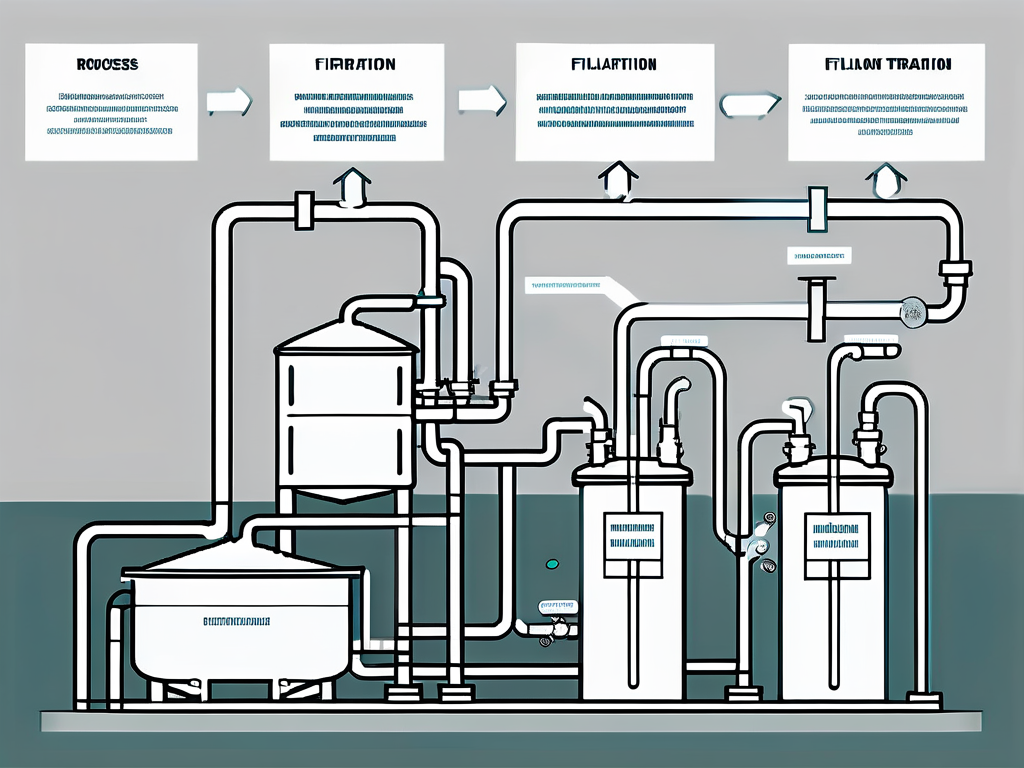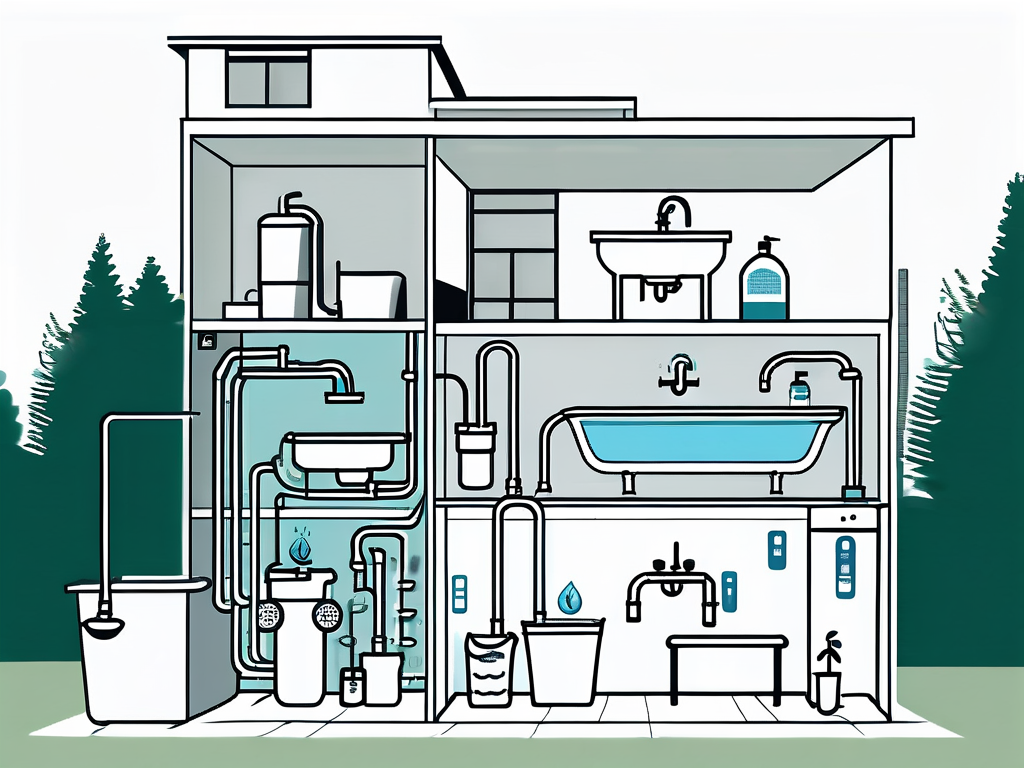
Greywater: Wastewater Treatment Explained
Greywater refers to the relatively clean wastewater that comes from baths, sinks, washing machines, and other kitchen appliances. It's distinct from blackwater, which is wastewater that contains fecal matter and urine, typically coming from toilets. Greywater makes up a significant portion of residential wastewater and, if treated and managed properly, it can provide an excellent source of water for non-potable uses, such as irrigation and toilet flushing.
The treatment and reuse of greywater can contribute significantly to water conservation, especially in regions where water resources are scarce. This article will delve into the intricacies of greywater treatment, discussing the processes involved, the technologies used, and the benefits and challenges associated with it.
Understanding Greywater
Before delving into the treatment processes, it's essential to understand what greywater is and how it differs from other types of wastewater. Greywater is the wastewater that comes from showers, baths, sinks, washing machines, and dishwashers. It's called greywater because it's lighter in color than blackwater, which comes from toilets and contains fecal matter and urine.
Greywater typically contains a variety of substances, including dirt, food, grease, hair, and household cleaning products. While it may contain bacteria, it's generally free of the pathogenic organisms found in blackwater. However, if greywater is left untreated, it can quickly become blackwater due to microbial activity.
Greywater vs. Blackwater
Greywater and blackwater are two distinct types of wastewater, and they require different treatment processes. Blackwater contains fecal matter and urine, which introduce a range of pathogens into the water. As such, blackwater treatment typically involves more intensive processes to ensure these pathogens are effectively eliminated.
On the other hand, greywater is generally less hazardous than blackwater, but it still contains substances that can be harmful to the environment and human health if not properly treated. For instance, greywater can contain high levels of nutrients, such as nitrogen and phosphorus, which can cause eutrophication if released into bodies of water.
Greywater Treatment Processes
The treatment of greywater involves several processes designed to remove the contaminants it contains. The specific processes used can vary depending on the quality of the greywater and the intended use of the treated water. However, most greywater treatment systems involve some combination of physical, biological, and chemical treatment processes.

Physical treatment processes are designed to remove solid materials from the greywater. This can involve simple screening to remove larger particles, or more complex processes like sedimentation and filtration. Biological treatment processes, on the other hand, use microorganisms to break down organic matter in the greywater. Finally, chemical treatment processes can be used to remove specific contaminants, such as heavy metals or certain types of organic compounds.
Physical Treatment
Physical treatment is usually the first step in the greywater treatment process. It involves the use of physical methods to remove solid materials from the greywater. This can be as simple as a screen that catches larger particles, or as complex as a sedimentation tank that allows smaller particles to settle out of the water.
Filtration is another common physical treatment process. It involves passing the greywater through a filter that catches smaller particles. The type of filter used can vary depending on the quality of the greywater and the intended use of the treated water. For instance, a coarse sand filter might be sufficient for greywater that will be used for irrigation, while a finer filter might be needed for greywater that will be used for toilet flushing.
Biological Treatment
Biological treatment is a crucial part of the greywater treatment process. It involves the use of microorganisms to break down organic matter in the greywater. There are several types of biological treatment processes, including activated sludge processes, trickling filters, and constructed wetlands.
Activated sludge processes involve mixing the greywater with a sludge that contains a high concentration of microorganisms. These microorganisms break down the organic matter in the greywater, converting it into carbon dioxide, water, and other harmless substances. Trickling filters, on the other hand, involve passing the greywater over a bed of material (such as gravel or plastic media) that is covered in a layer of microorganisms. As the greywater trickles over the material, the microorganisms break down the organic matter.
Chemical Treatment
Chemical treatment can be used to remove specific contaminants from greywater. This can involve the use of coagulants to cause small particles to clump together and settle out of the water, or the use of disinfectants to kill any remaining microorganisms. In some cases, advanced oxidation processes may be used to break down particularly stubborn organic compounds.
It's important to note that chemical treatment is usually used in conjunction with physical and biological treatment processes. The specific chemicals used will depend on the quality of the greywater and the intended use of the treated water. For instance, chlorine is commonly used as a disinfectant in greywater treatment, but it can react with organic matter in the water to form potentially harmful byproducts. As such, it's important to ensure that the greywater is well-treated before disinfection.
Greywater Reuse
One of the main reasons for treating greywater is to enable its reuse. Reusing greywater can significantly reduce the demand for fresh water, especially in areas where water resources are scarce. There are several ways in which treated greywater can be reused, including irrigation, toilet flushing, and even laundry washing.
However, it's important to note that the quality of the treated greywater needs to be appropriate for its intended use. For instance, greywater that is used for irrigation needs to be free of substances that could harm plants or contaminate the soil. Similarly, greywater that is used for toilet flushing or laundry washing needs to be free of pathogens that could pose a risk to human health.
Irrigation
Irrigation is one of the most common uses for treated greywater. It can be used to water lawns, gardens, and even agricultural crops. Using greywater for irrigation can significantly reduce the demand for fresh water, especially in arid regions where water resources are scarce.
However, it's important to ensure that the greywater is treated to a sufficient standard before it's used for irrigation. The greywater should be free of substances that could harm plants, such as heavy metals or high levels of salts. It should also be free of pathogens that could contaminate the soil or crops.
Toilet Flushing
Another common use for treated greywater is toilet flushing. This can significantly reduce the demand for fresh water, as toilets are one of the biggest consumers of water in most households. Using greywater for toilet flushing can also help to reduce the load on municipal wastewater treatment plants.
Again, it's important to ensure that the greywater is treated to a sufficient standard before it's used for toilet flushing. The greywater should be free of substances that could cause scaling or corrosion in the plumbing system, and it should be free of pathogens that could pose a risk to human health.
Benefits and Challenges of Greywater Treatment and Reuse
The treatment and reuse of greywater can offer several benefits, especially in terms of water conservation. However, there are also several challenges associated with greywater treatment and reuse, including technical, regulatory, and public perception issues.

On the benefits side, greywater treatment and reuse can significantly reduce the demand for fresh water. This can be particularly beneficial in arid regions where water resources are scarce. Reusing greywater can also help to reduce the load on municipal wastewater treatment plants, and it can provide a source of nutrients for plants when used for irrigation.
Technical Challenges
Despite the potential benefits, there are several technical challenges associated with greywater treatment and reuse. One of the main challenges is ensuring that the greywater is treated to a sufficient standard for its intended use. This requires a well-designed treatment system and regular monitoring of the treated water quality.
Another technical challenge is dealing with the variability in greywater quality. The quality of greywater can vary significantly depending on the source and the activities of the household. For instance, greywater from a washing machine can vary in quality depending on the type of detergent used and the type of clothes being washed.
Regulatory Challenges
There are also several regulatory challenges associated with greywater treatment and reuse. In many regions, the regulations regarding greywater reuse are unclear or inconsistent. This can make it difficult for homeowners to implement greywater reuse systems, and it can create uncertainty for businesses that are developing greywater treatment technologies.
In addition, there can be challenges related to the disposal of the sludge that is produced during the greywater treatment process. The sludge can contain a range of contaminants, and it needs to be disposed of in a way that is safe and environmentally friendly. This can require additional treatment processes, and it can add to the cost of the greywater treatment system.
Public Perception Challenges
Finally, there can be challenges related to public perception of greywater reuse. Some people may be reluctant to use greywater for certain applications, such as toilet flushing or laundry washing, due to concerns about health and hygiene. This can be a significant barrier to the widespread adoption of greywater reuse practices.
However, with proper education and awareness-raising, these perceptions can be changed. Many studies have shown that people are more willing to accept greywater reuse when they understand the treatment processes involved and the benefits it can provide.
Conclusion
Greywater treatment and reuse can play a significant role in water conservation, especially in regions where water resources are scarce. However, it's important to ensure that the greywater is treated to a sufficient standard for its intended use, and that the treatment and reuse practices are in line with local regulations and public perceptions.
With advances in treatment technologies and a growing awareness of the importance of water conservation, the future looks promising for greywater treatment and reuse. As more and more people start to see the value in reusing this valuable resource, we can expect to see a greater adoption of greywater reuse practices in the coming years.



